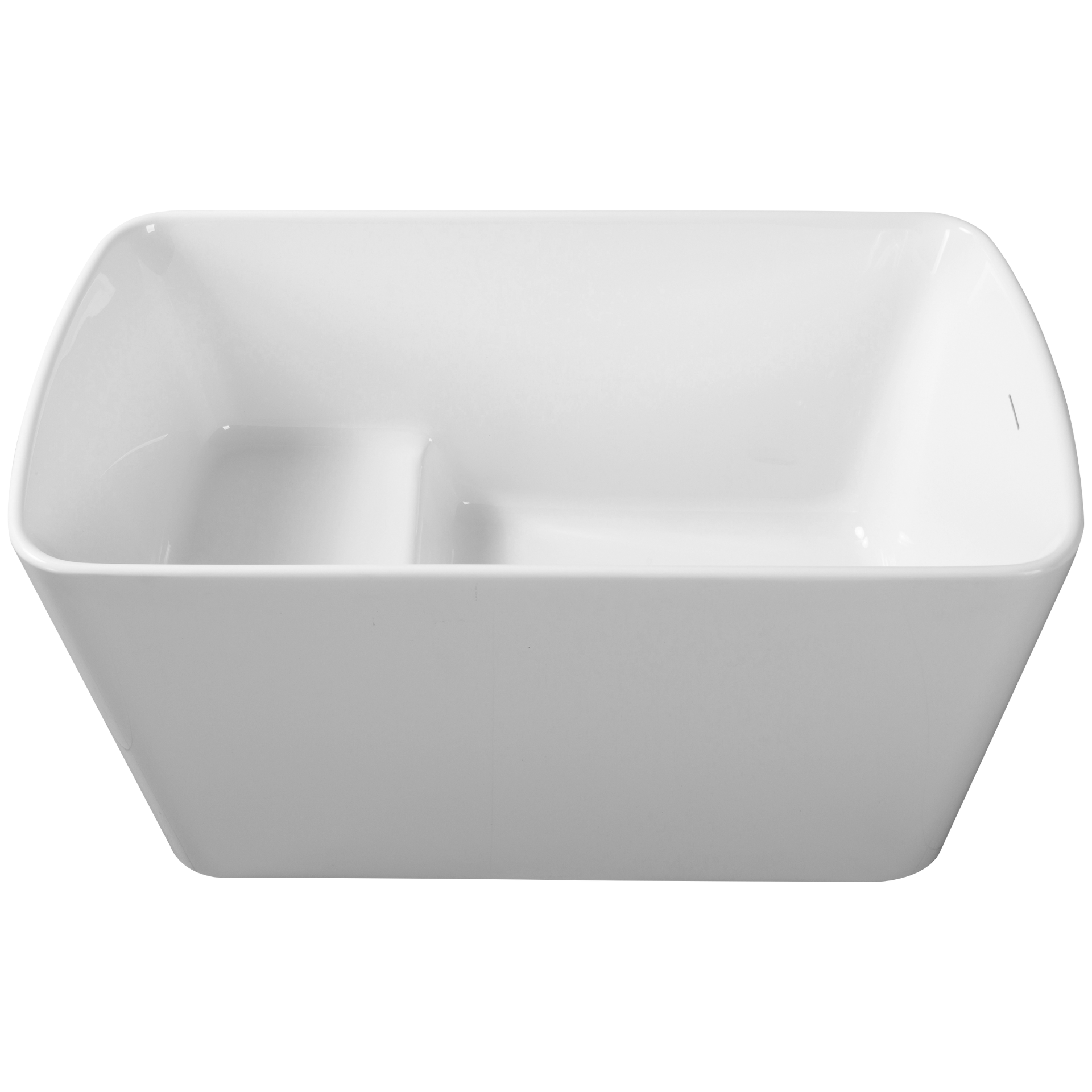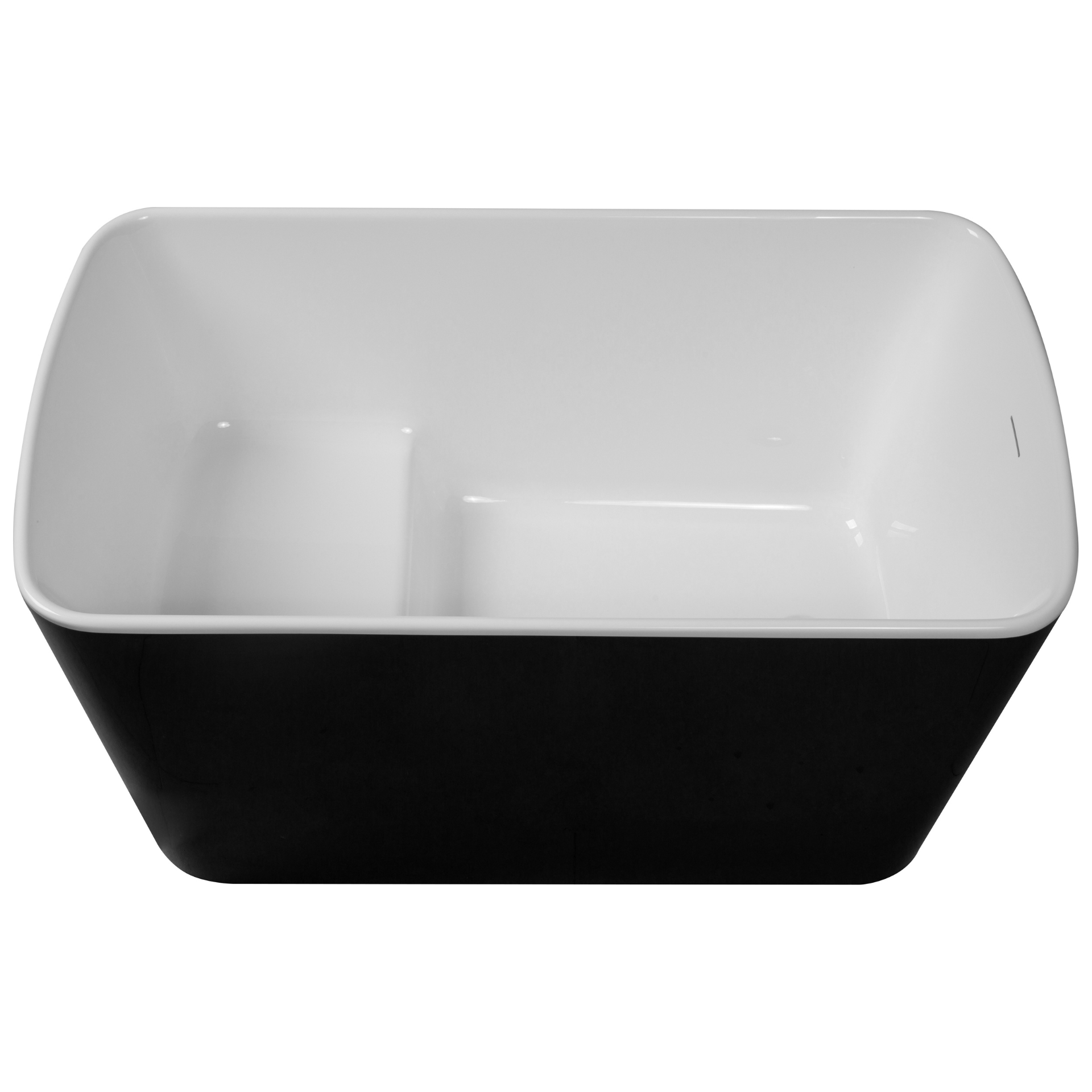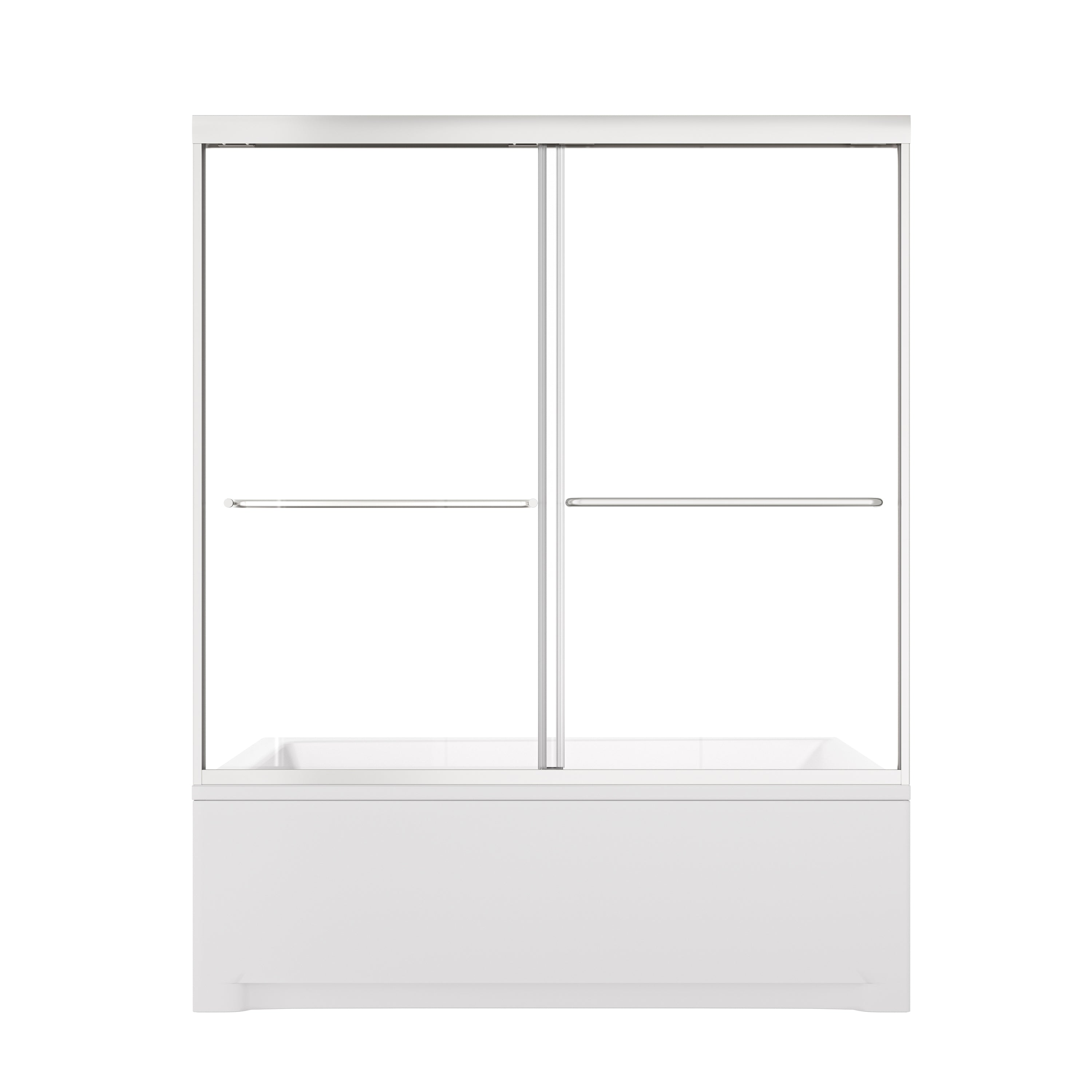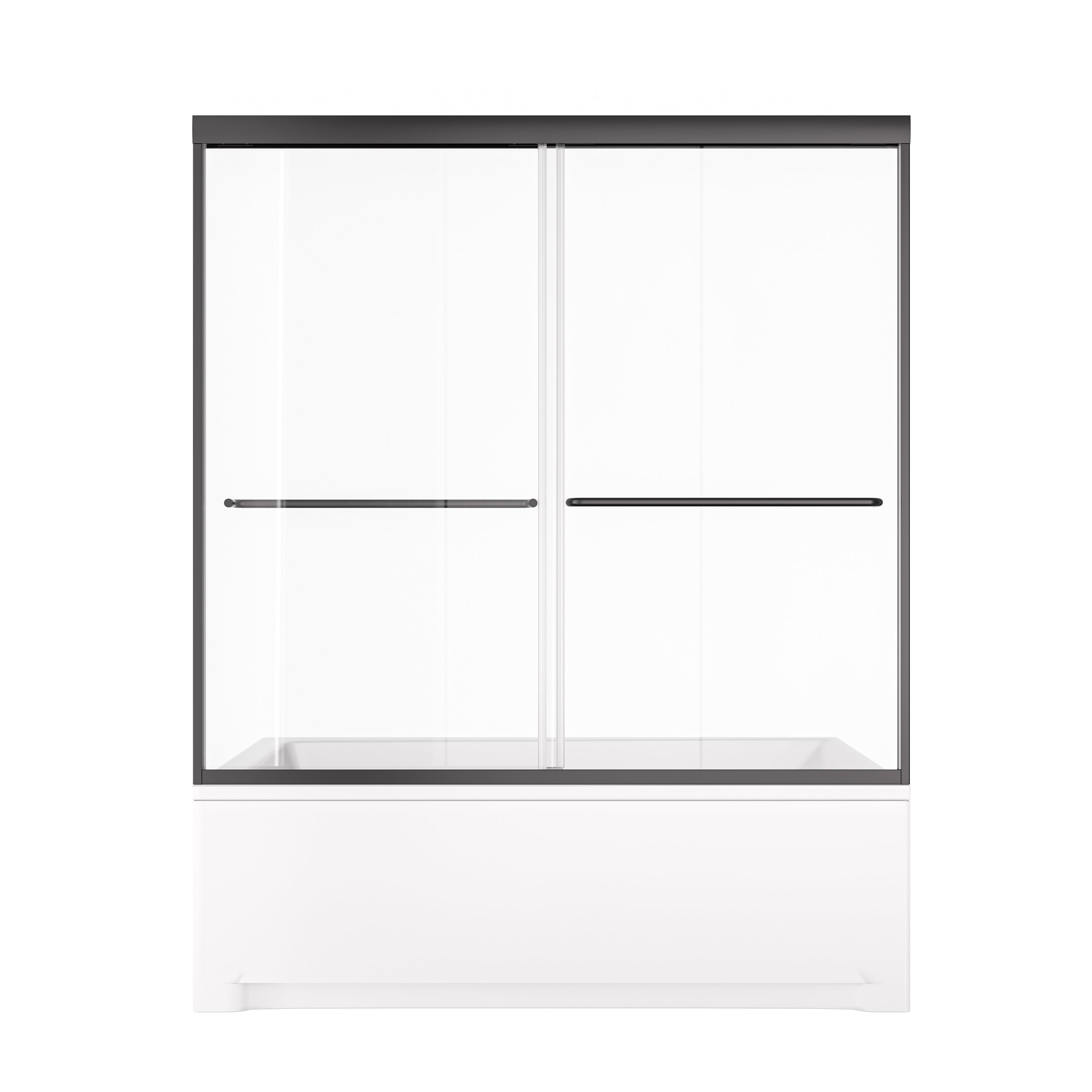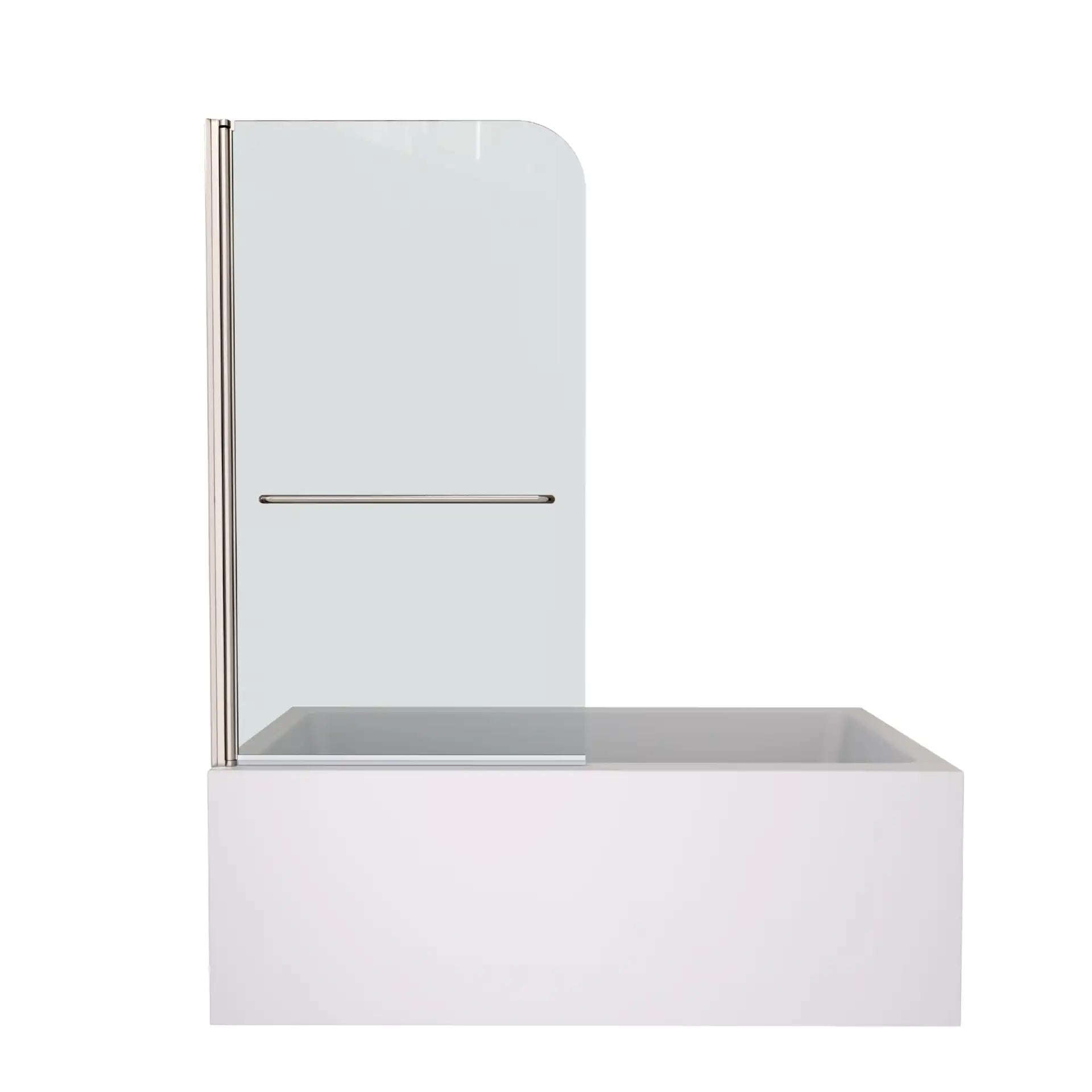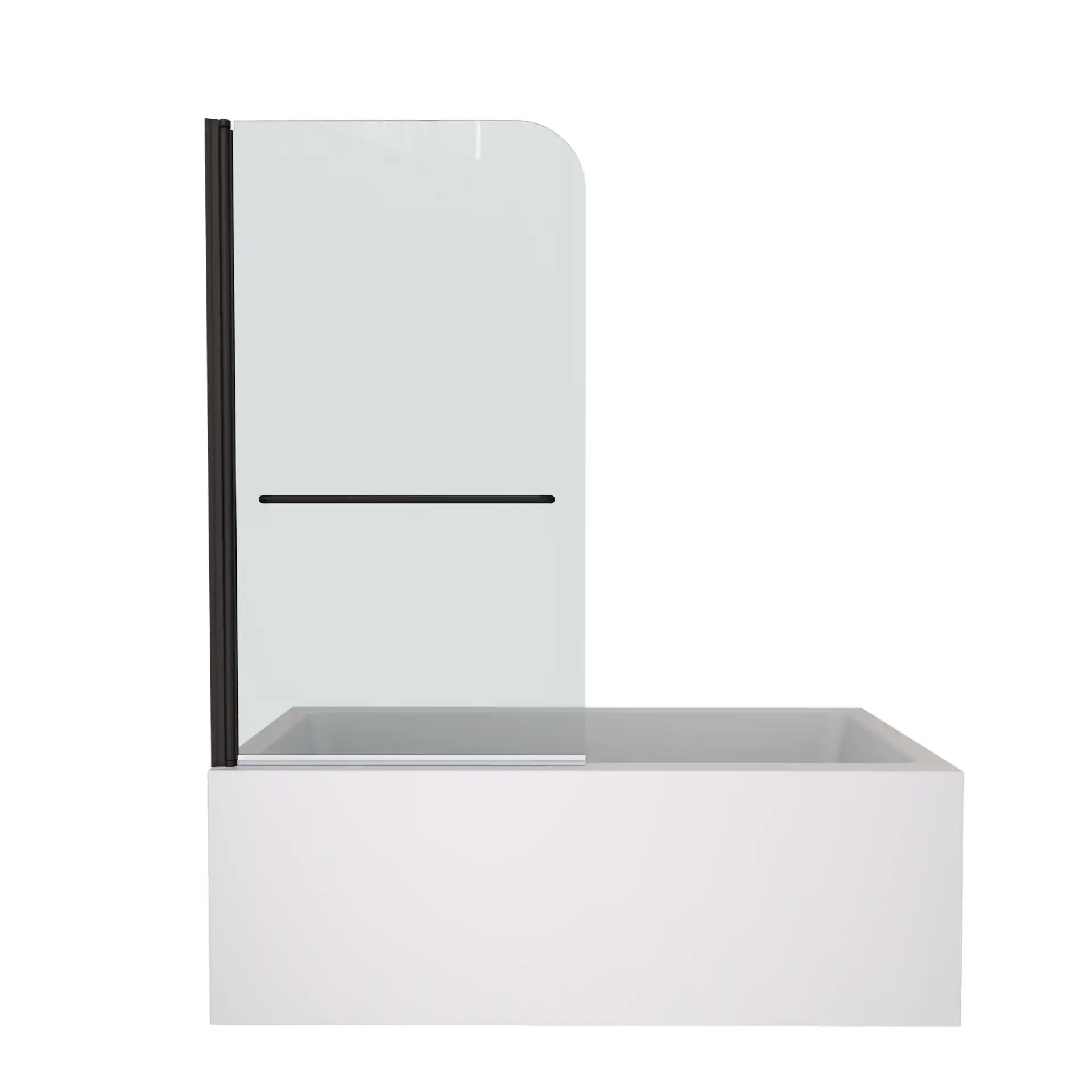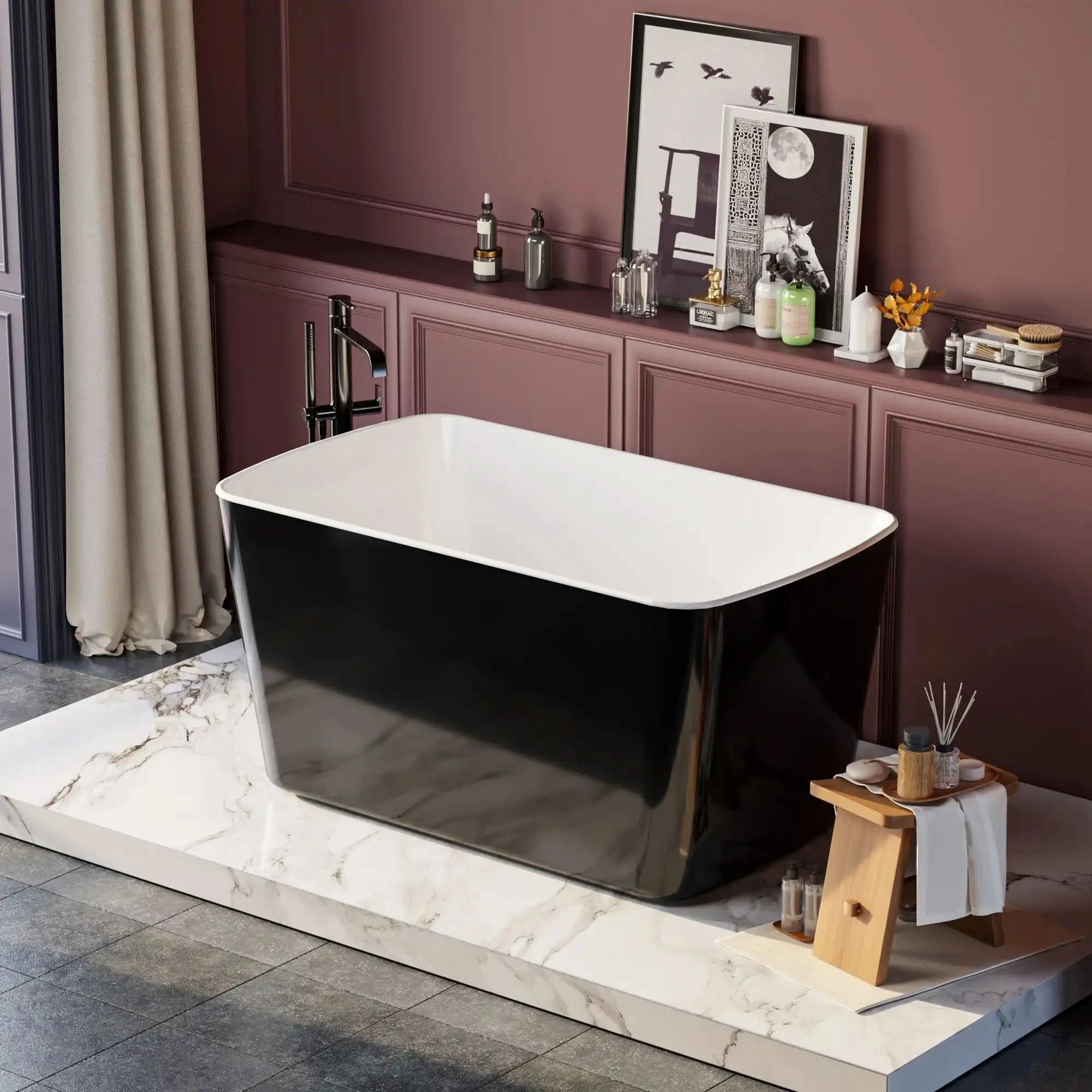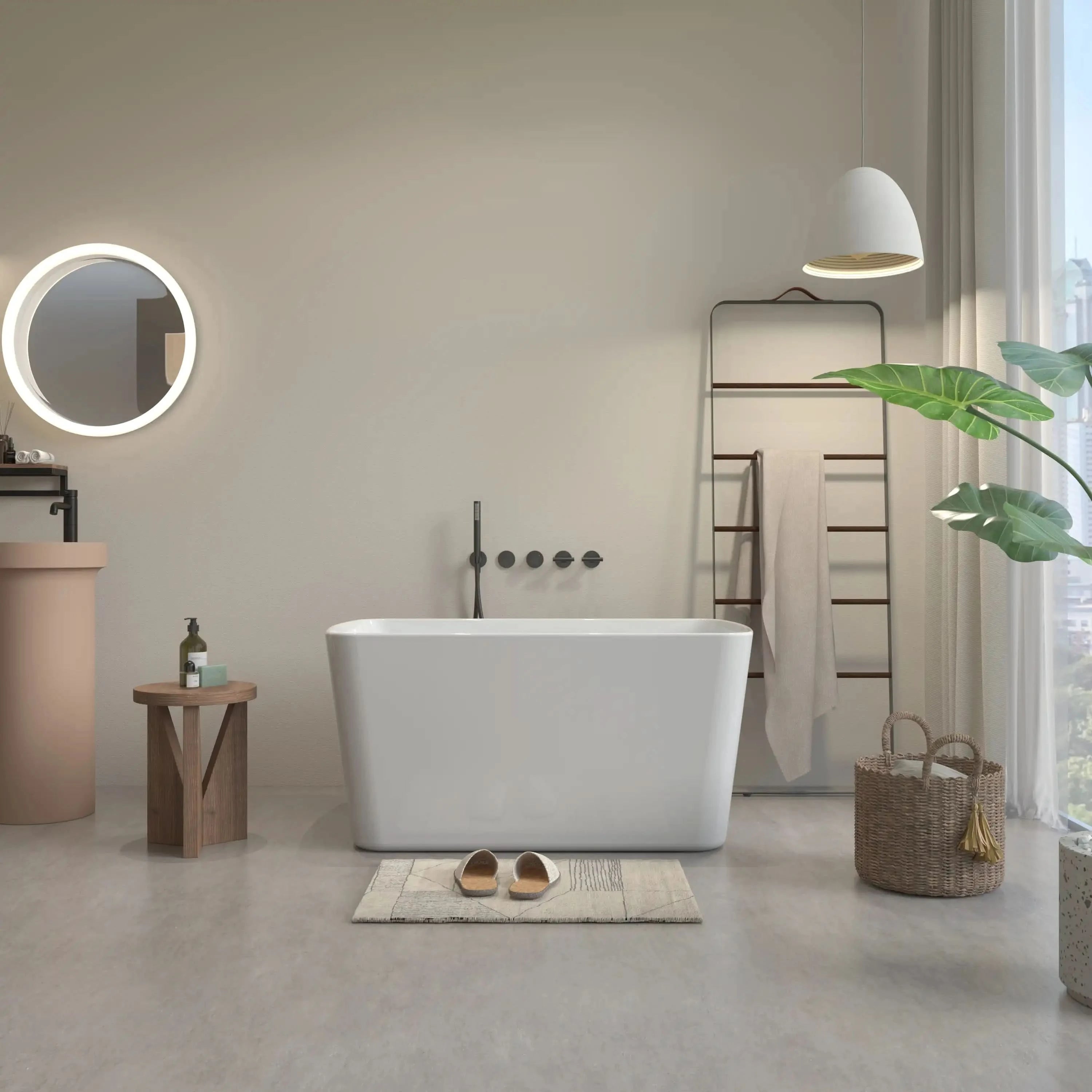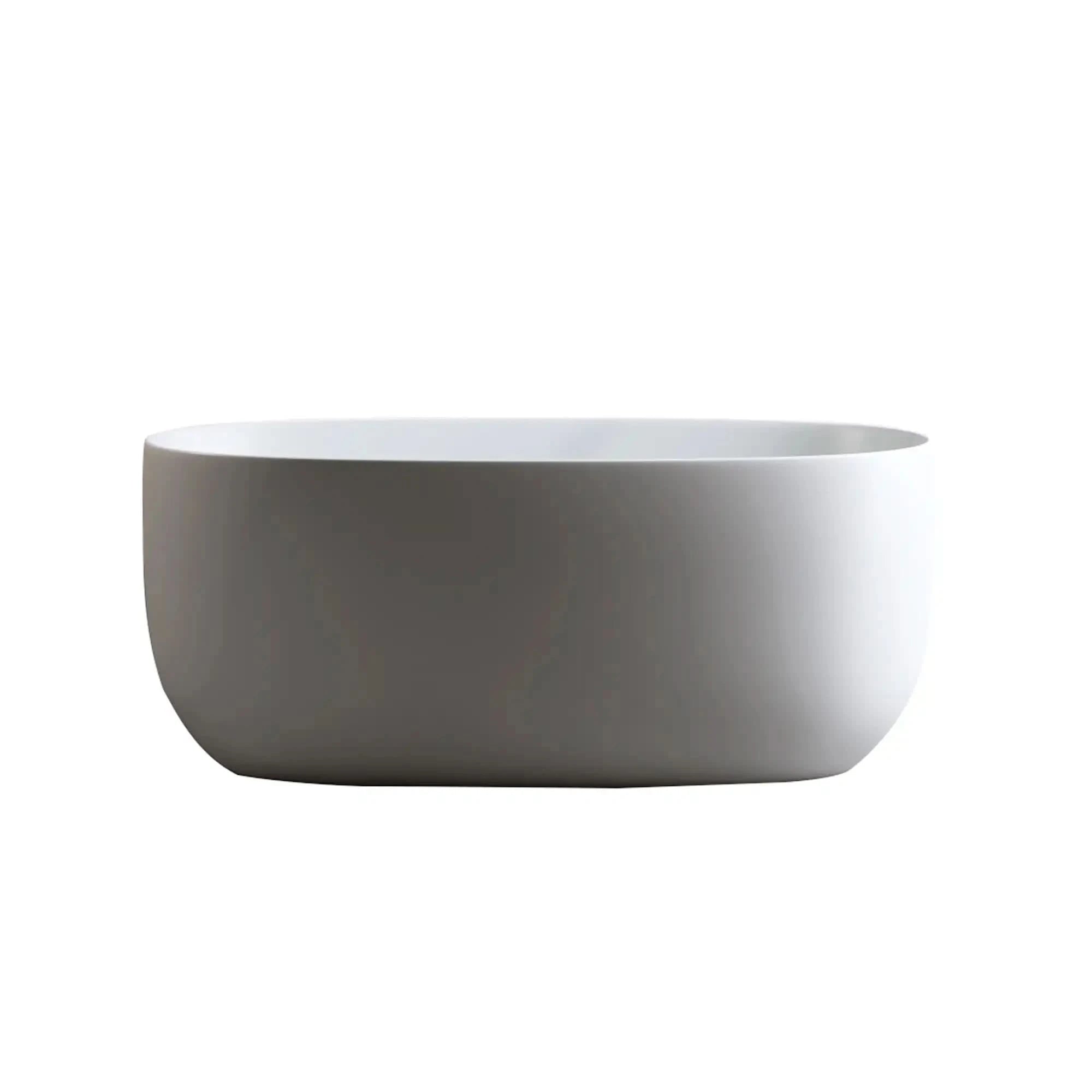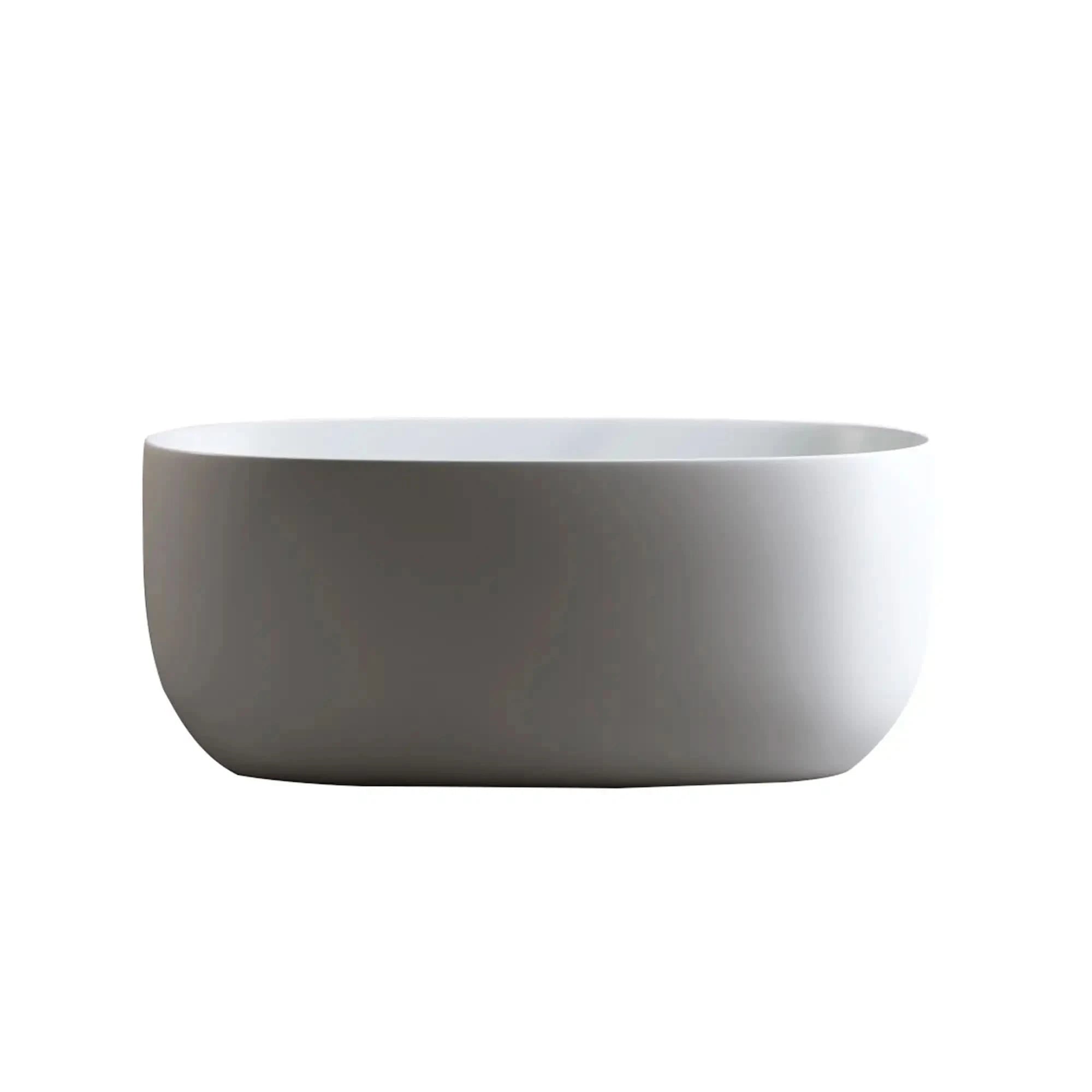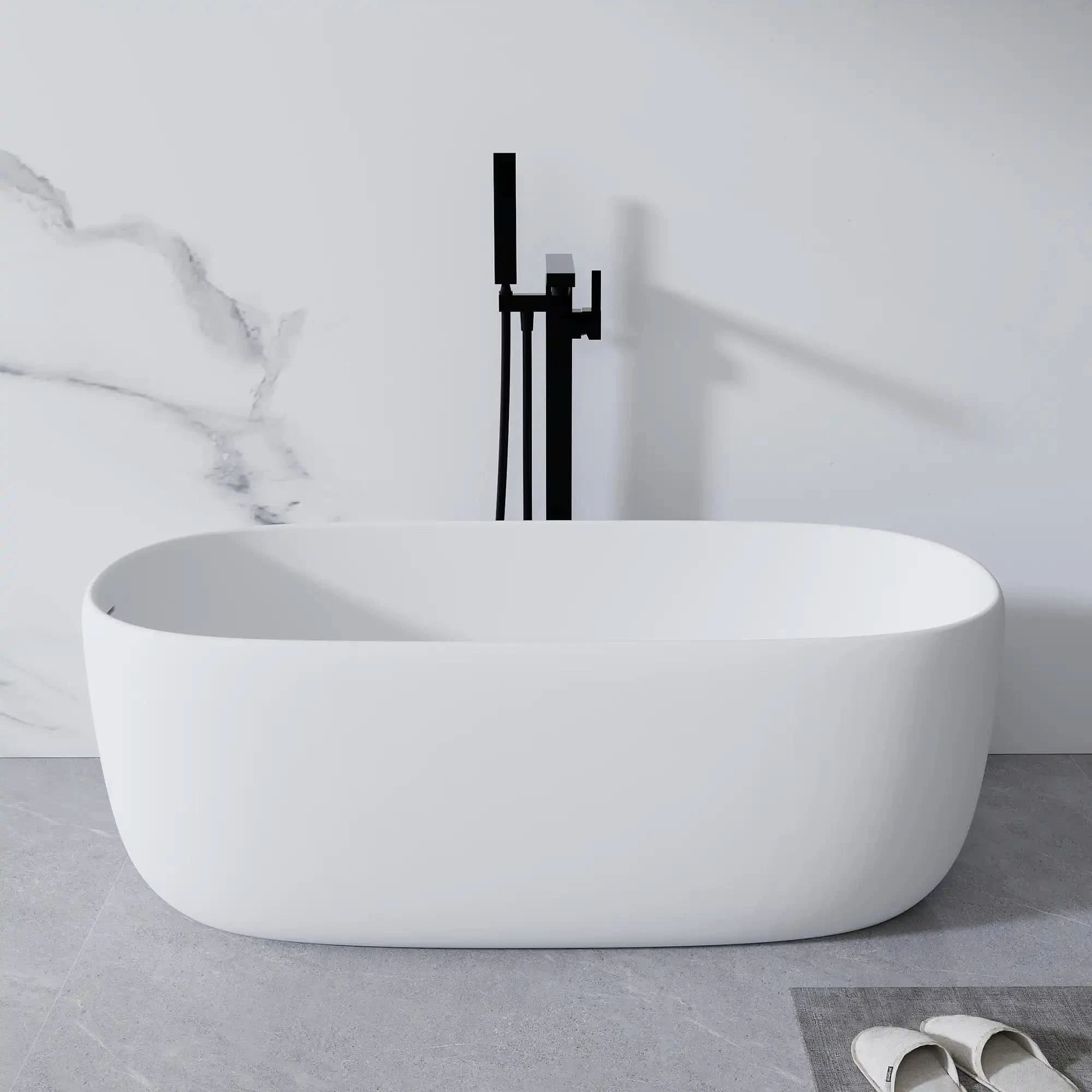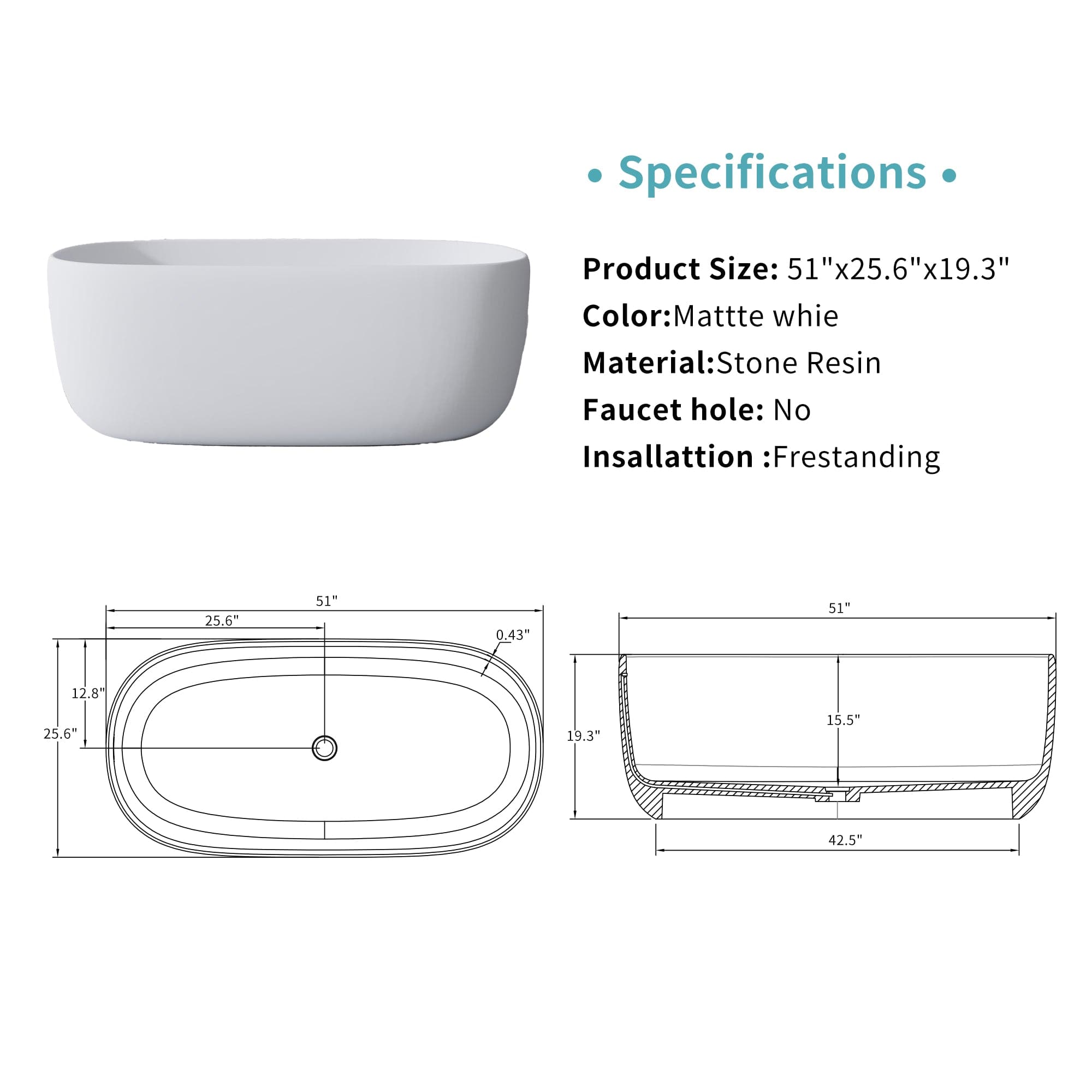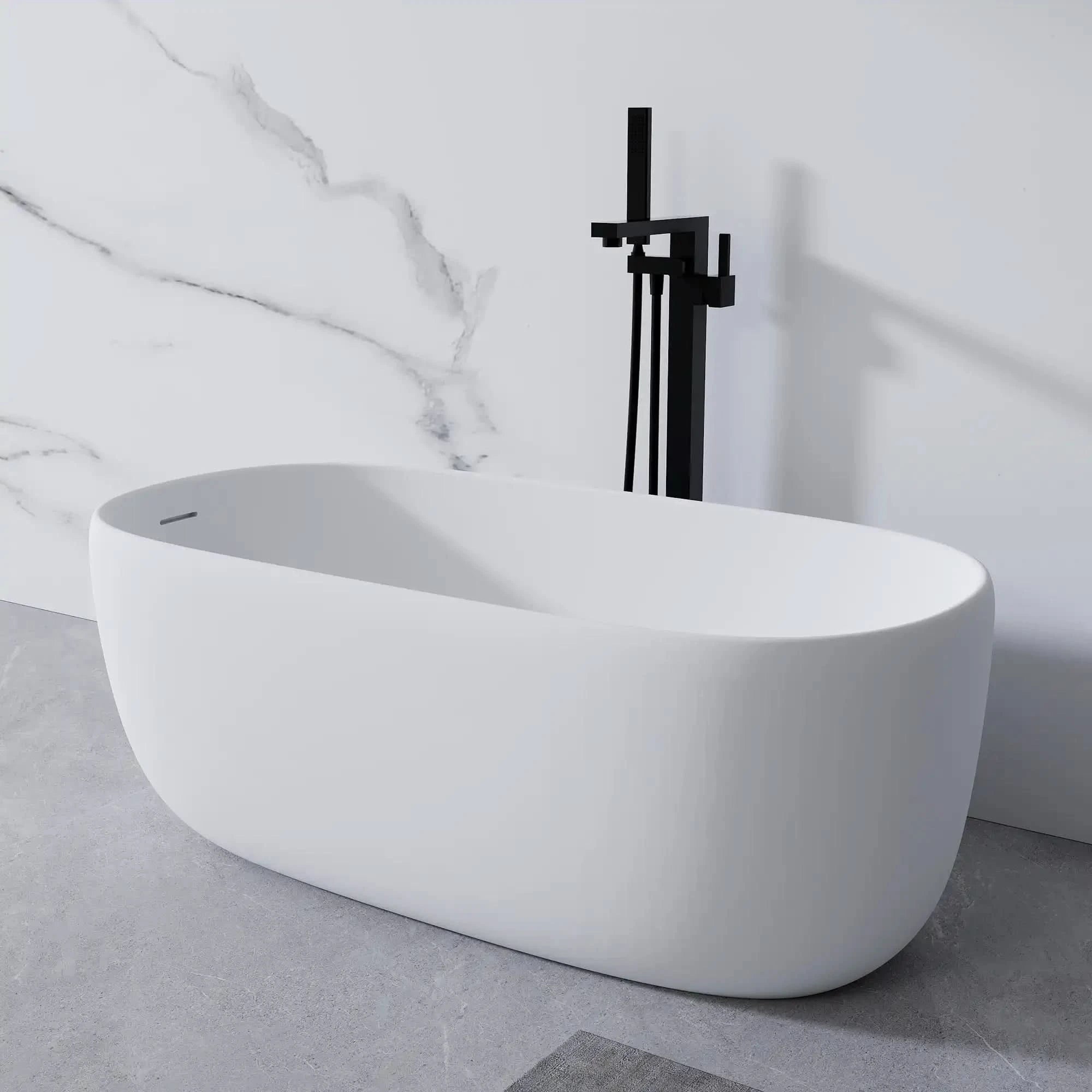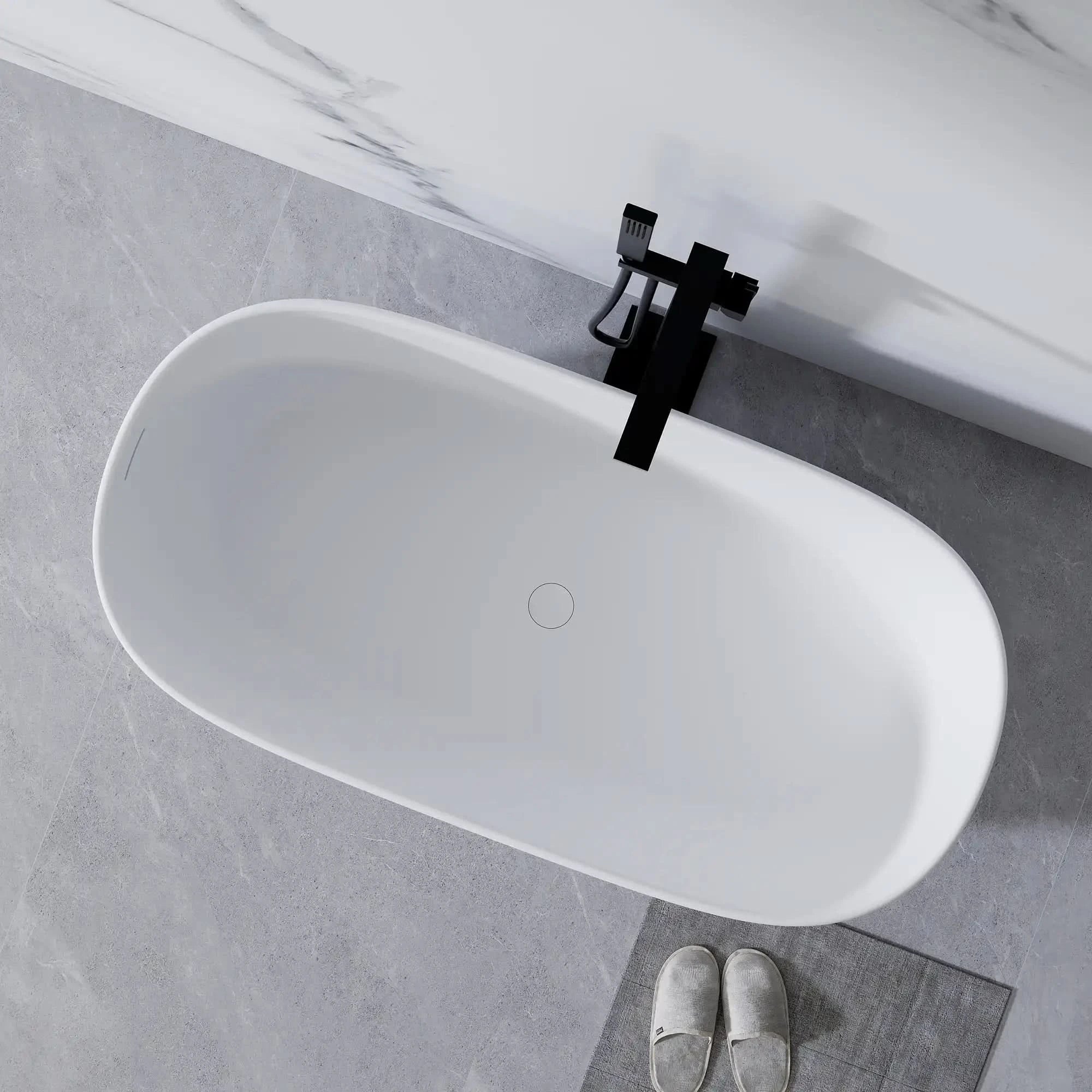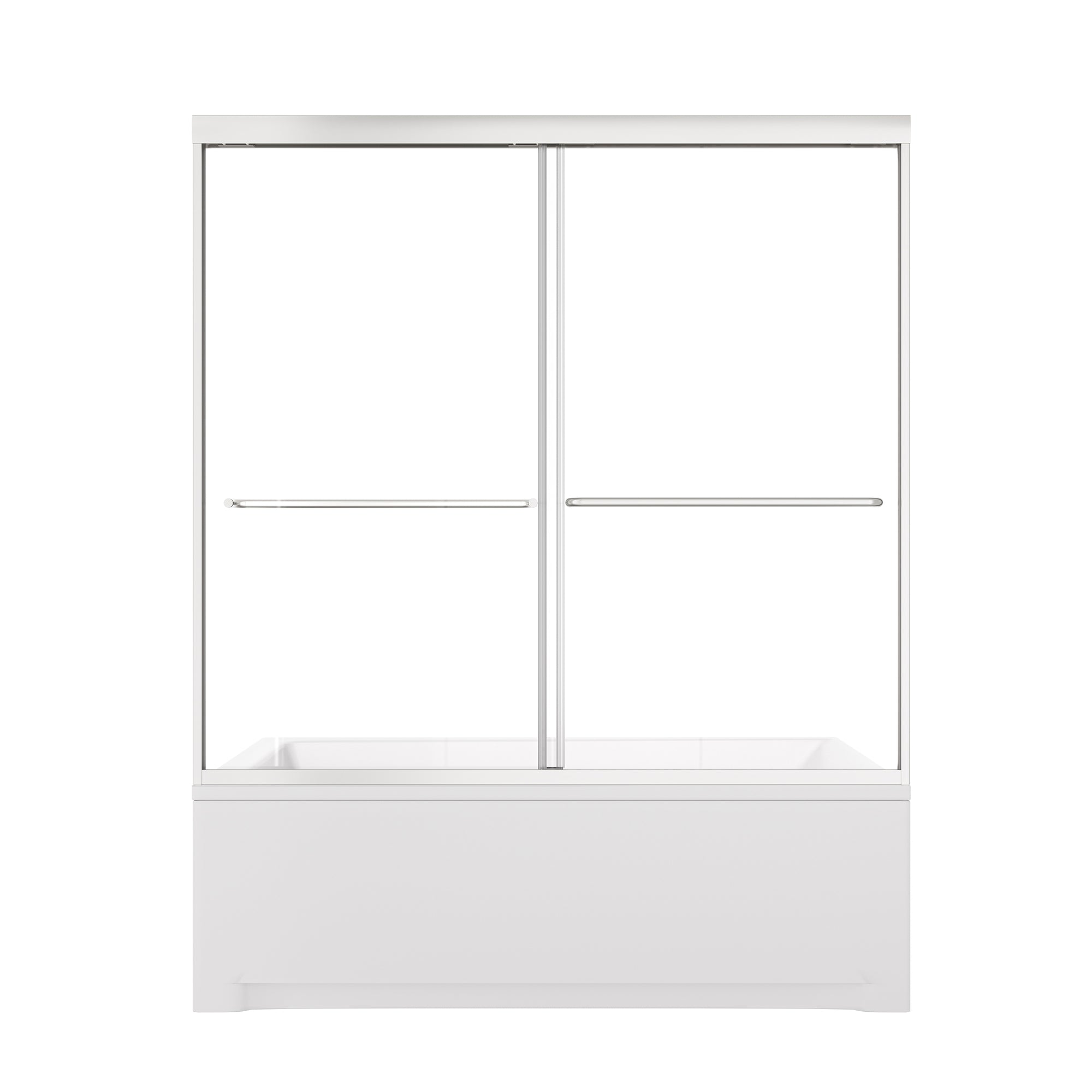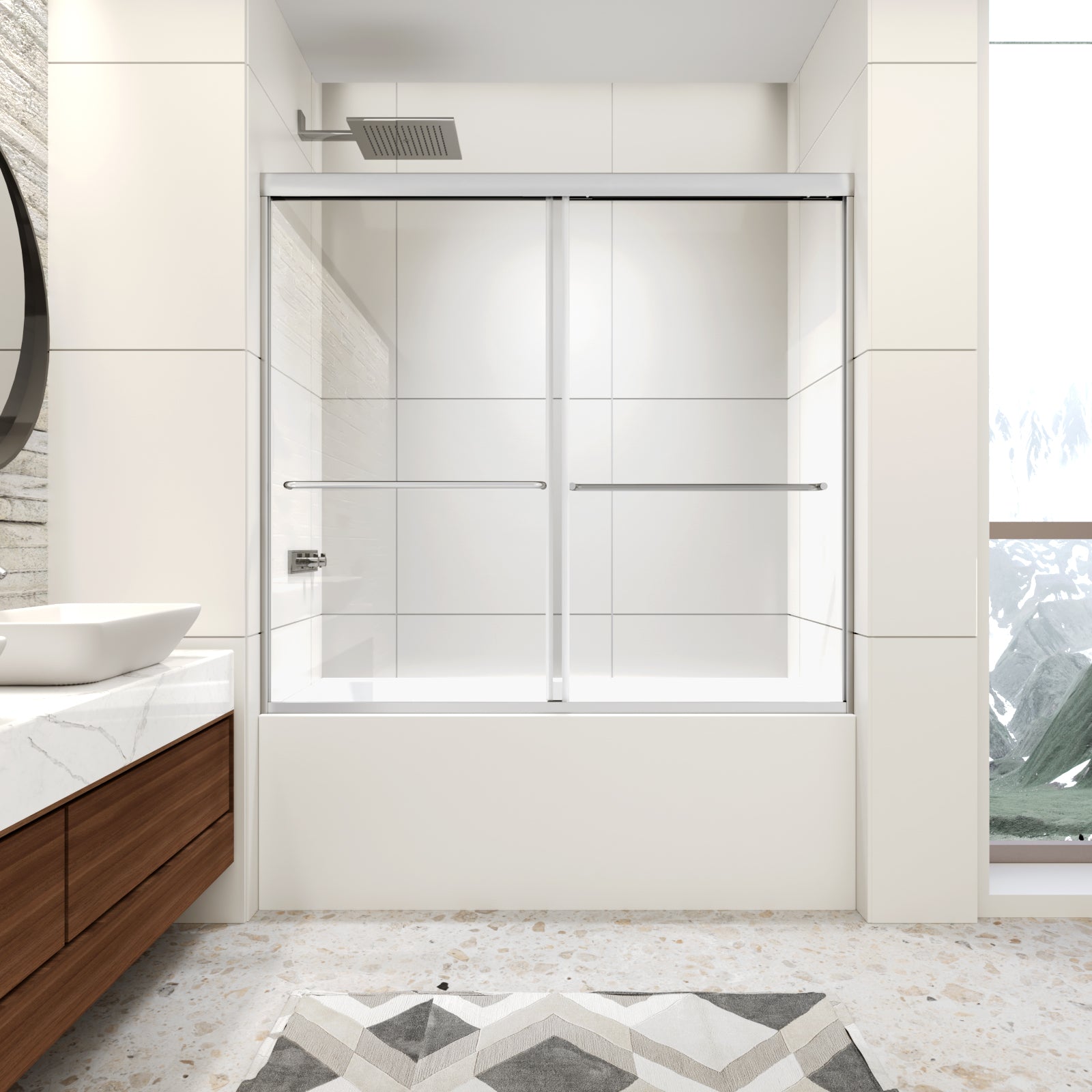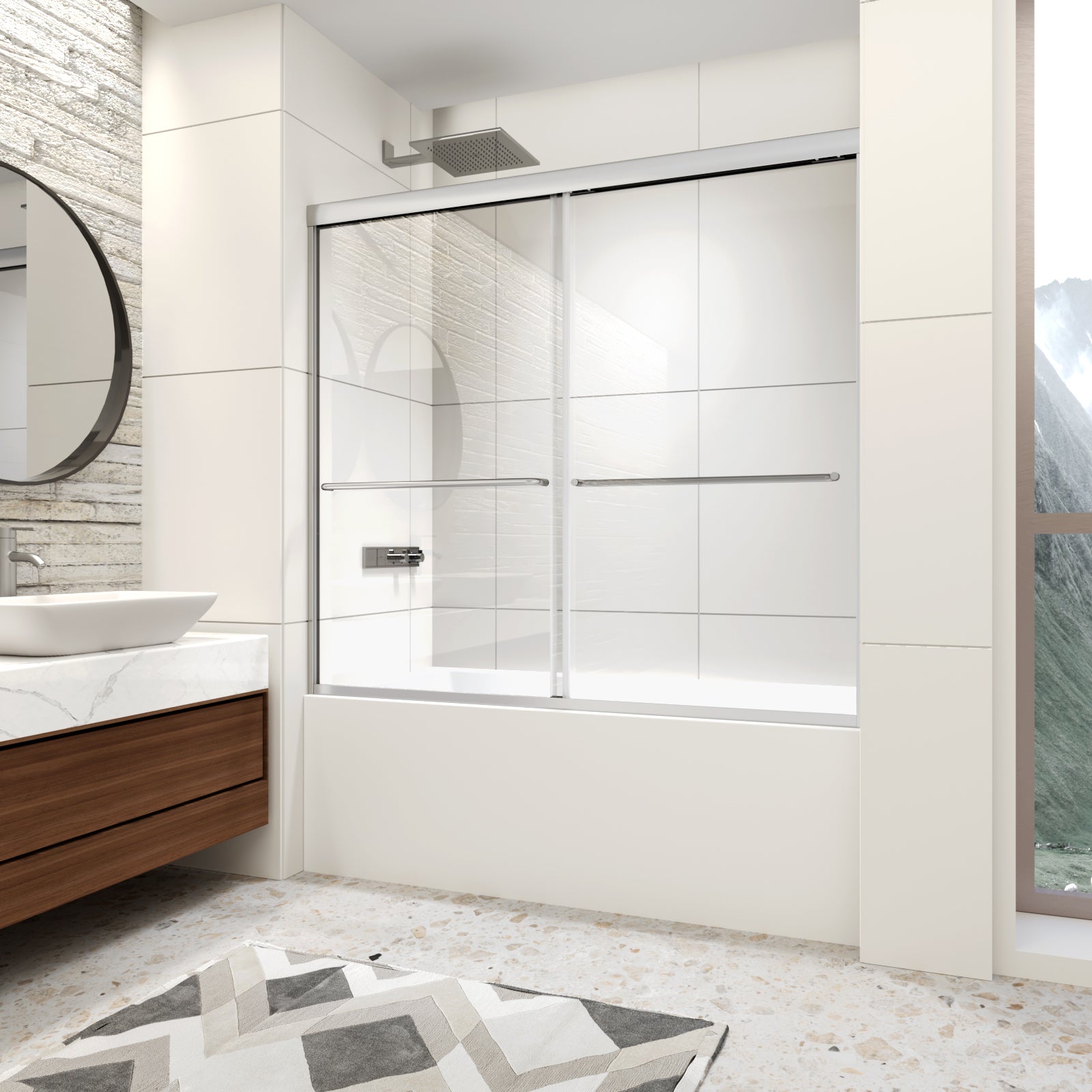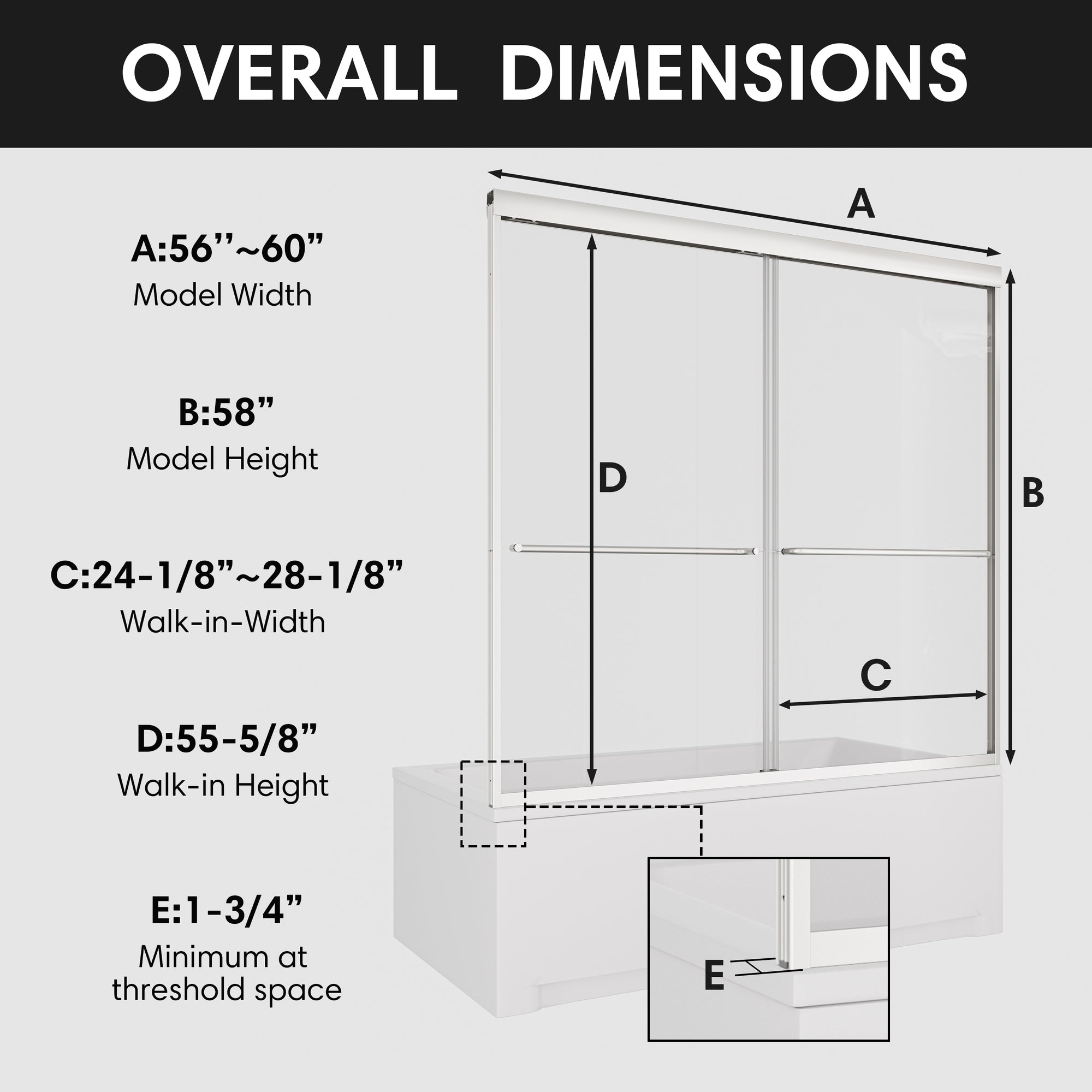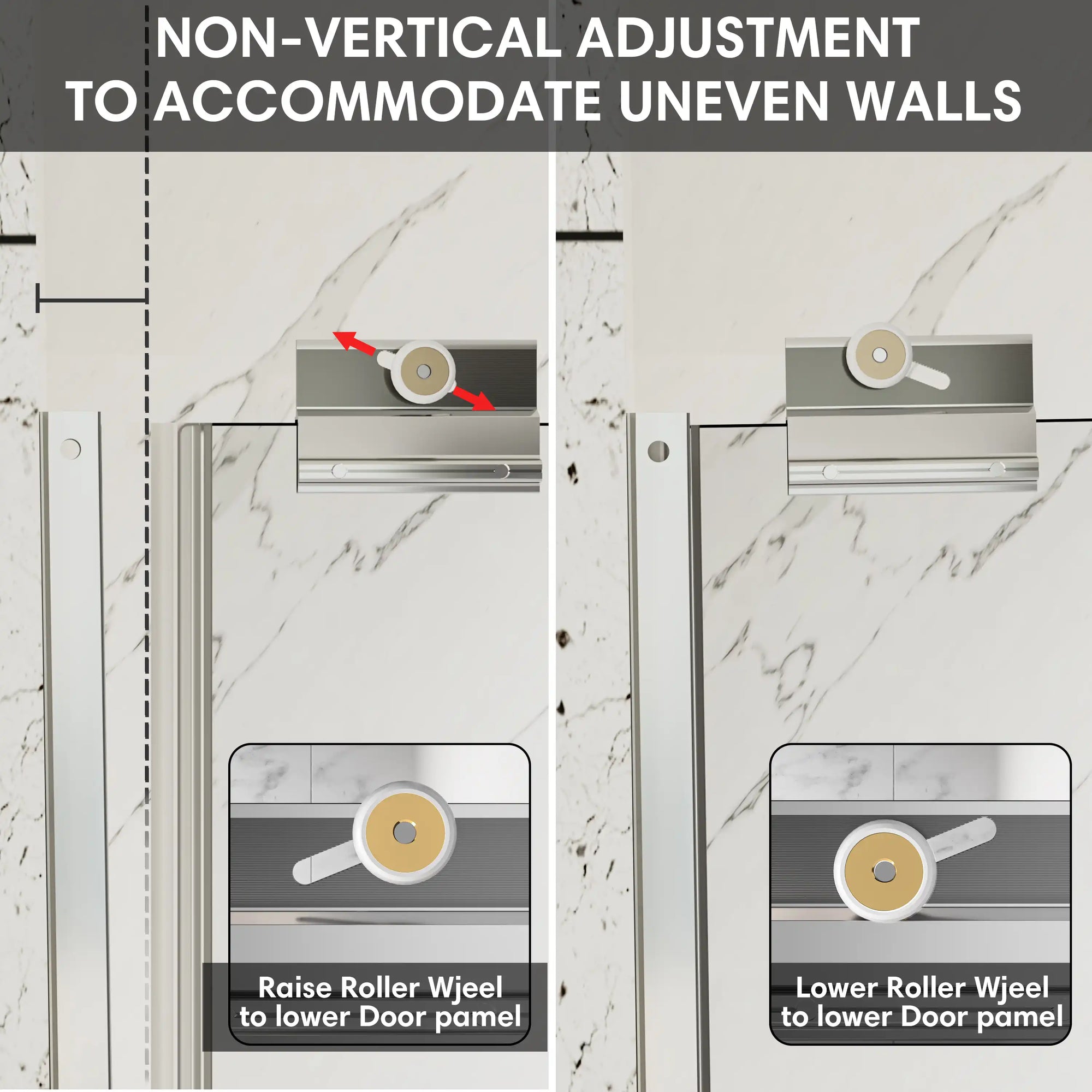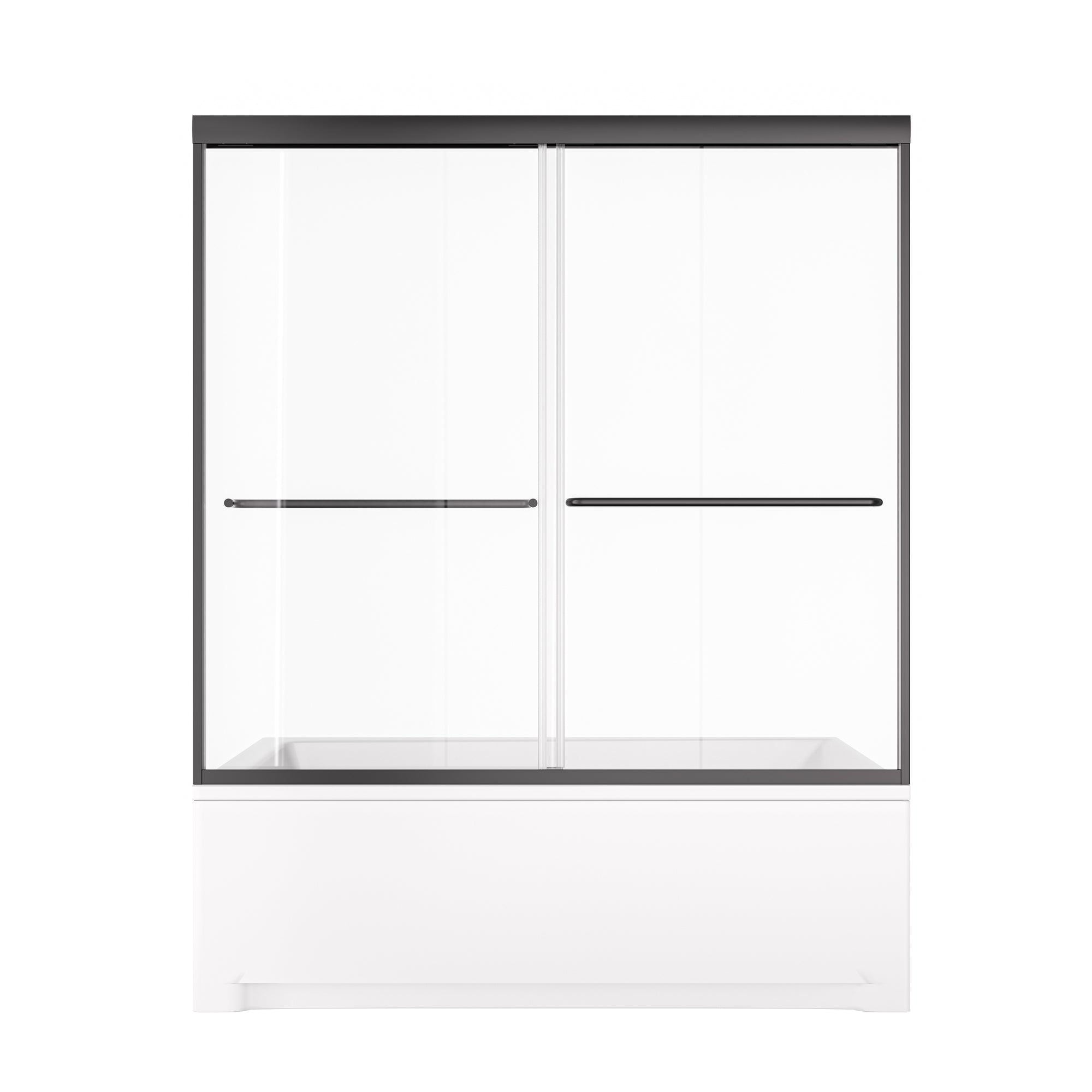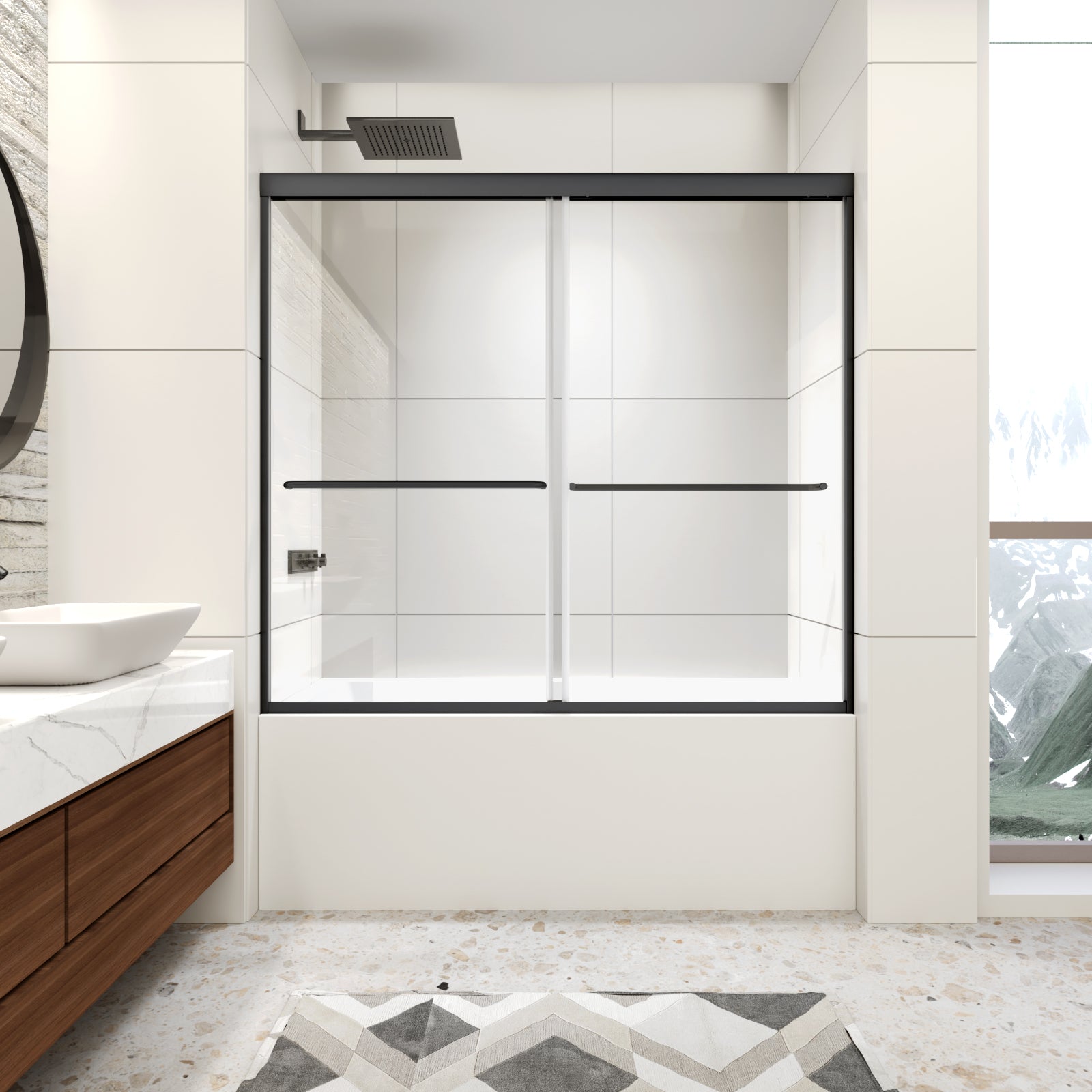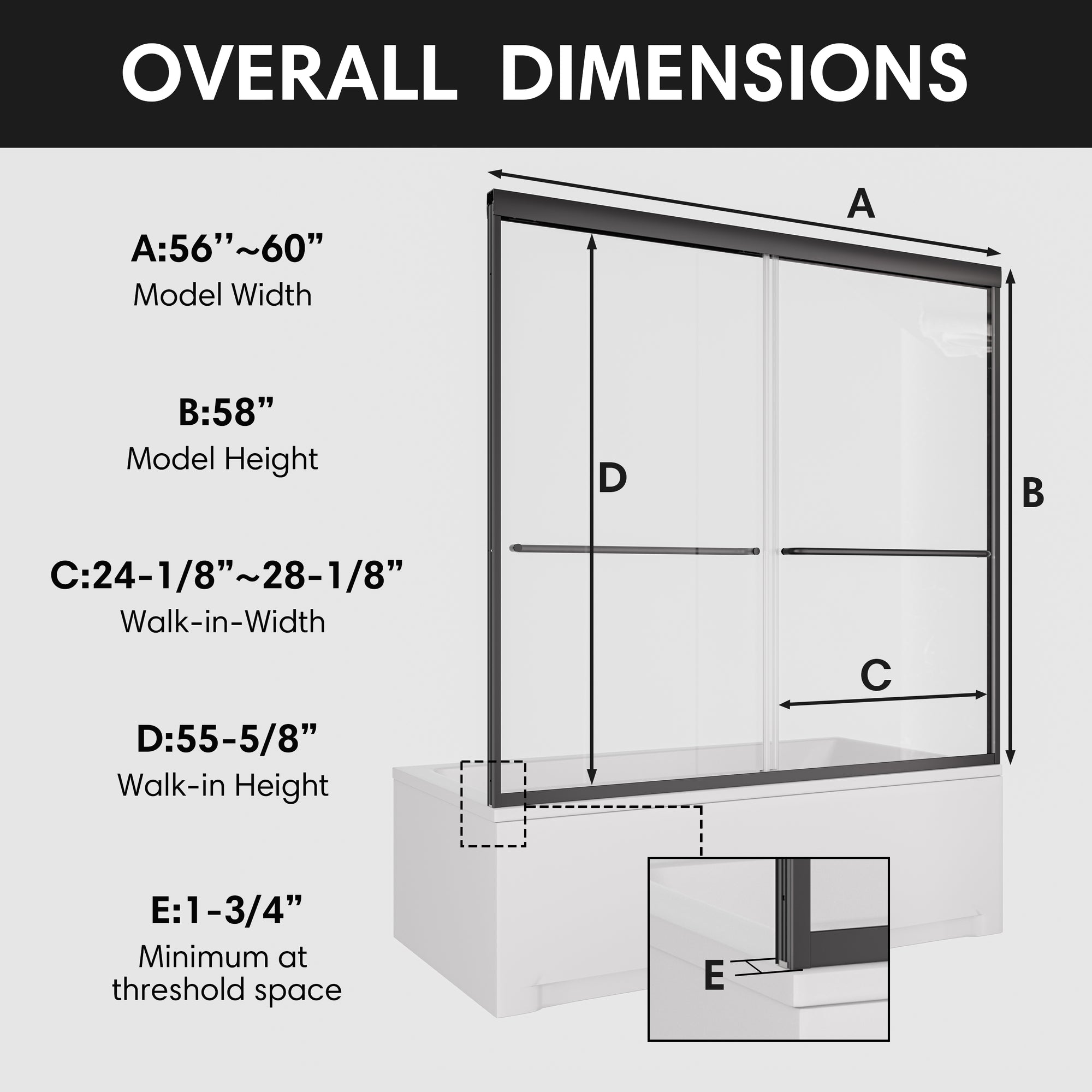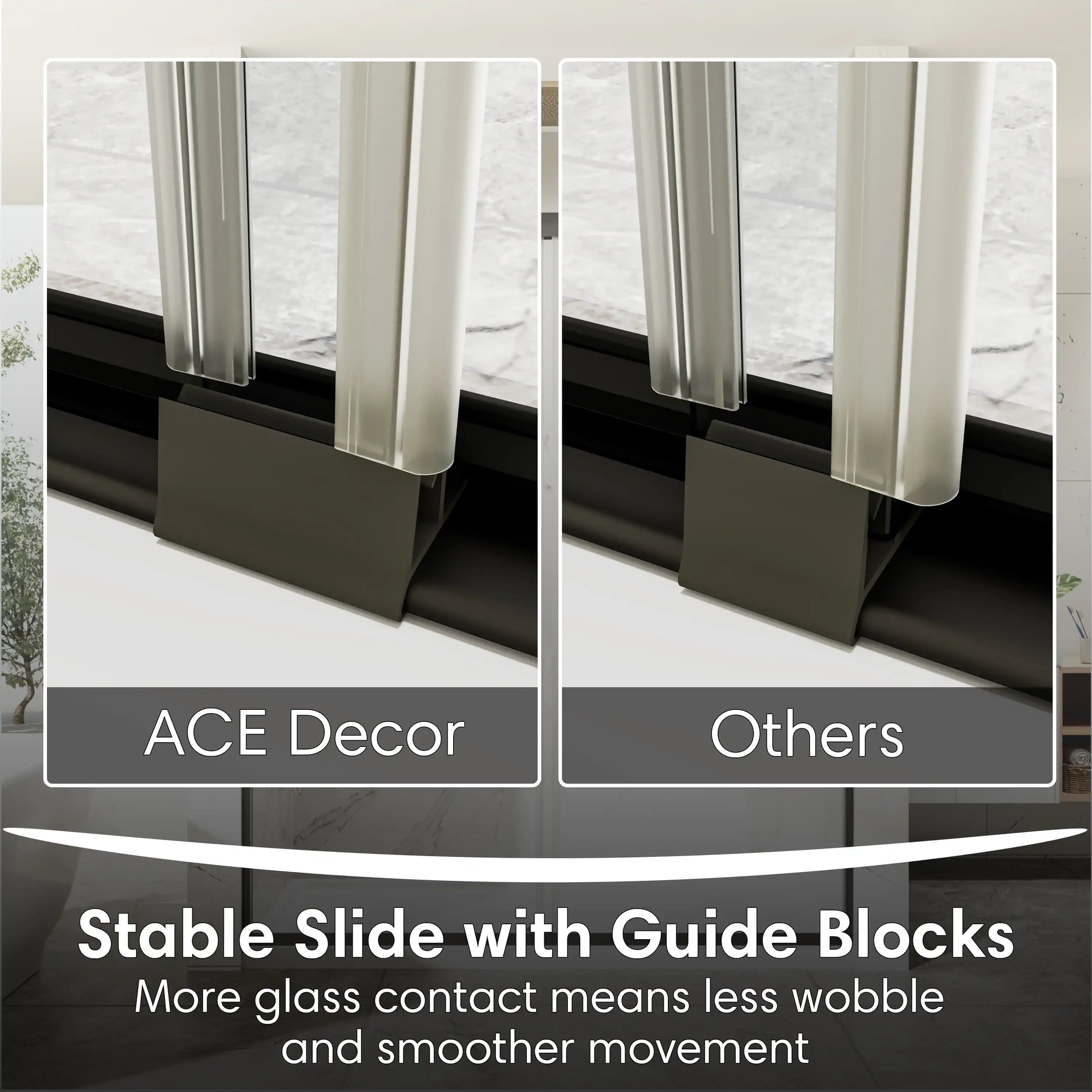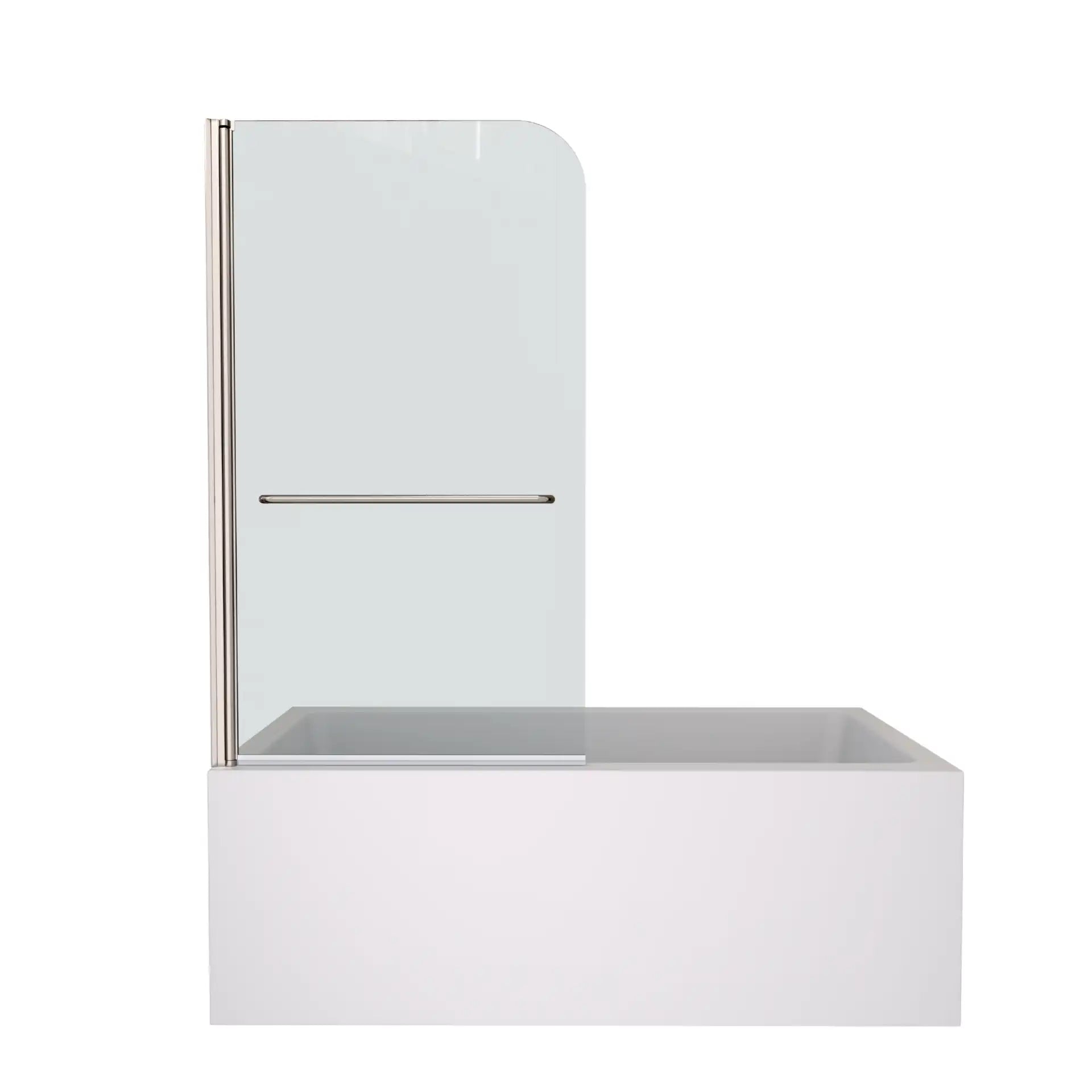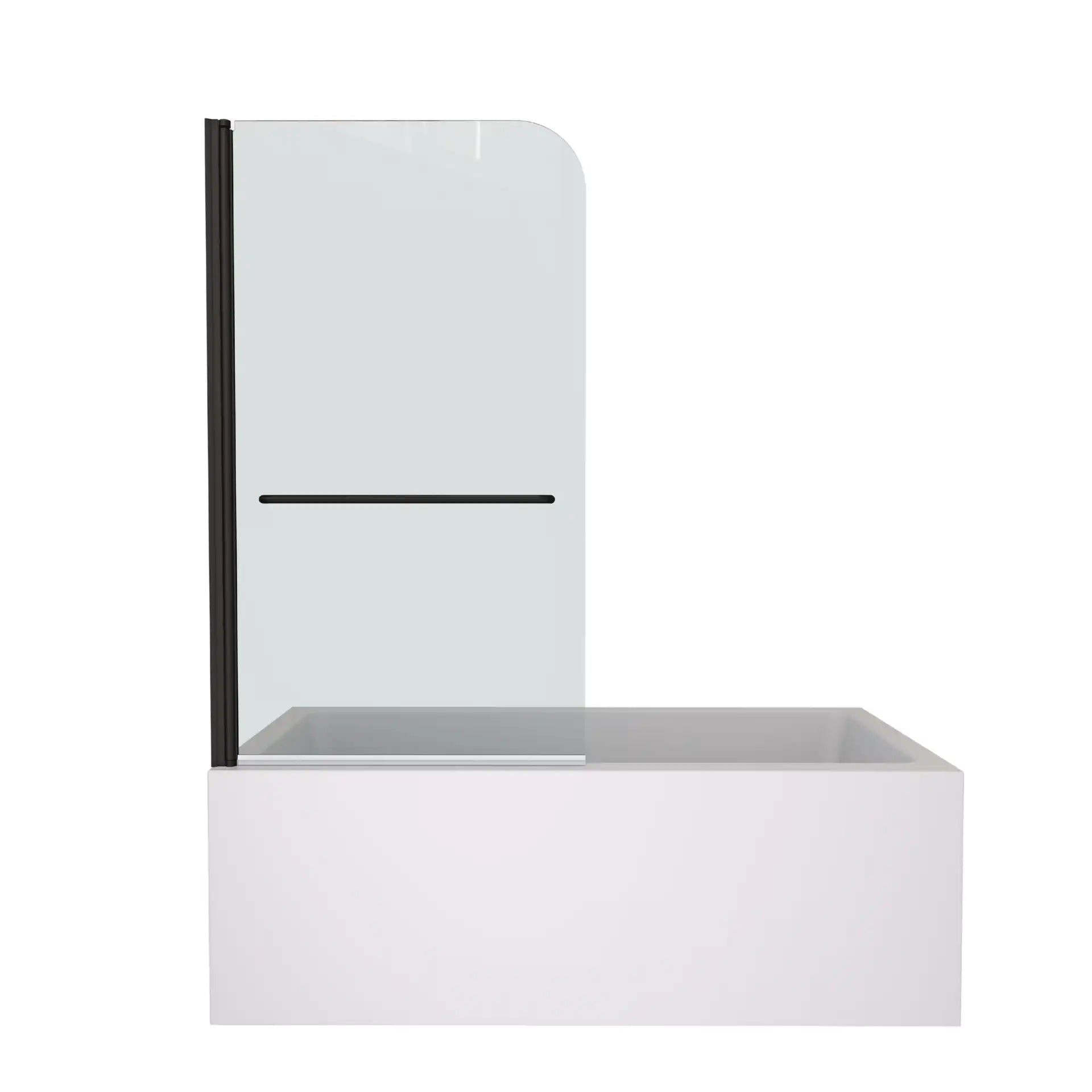Table of Contents
- What Is a Japanese Soaking Tub?
- Why Are Japanese Bathtubs So Small?
- Conclusion
- Explore Compact Soaking Tubs at Ace Decor
- Related Articles
As our world keeps on spinning faster and faster, a larger number of people are transforming their shelters into havens for tranquility. At the heart of this transition is an increasing consumer fancy for Japanese bathtubs —small, often but not always deep—and considered by their makers to be full-body relaxation vessels that won't break the bank or require a lot of real estate.
However such a wonderful design cannot stop questioning from curious homeowners and designers alike:
Why are Japanese bathtubs so small?
Is it a compromise? A cultural artifact? Or, is there a much more sinister reason for the small size? This article delves into the answer to that question, but first a little evidence supporting why Japanese soaking tubs are growing in popularity for modern bathroom design anywhere.
We will go well beyond aesthetics to cover history, design principles, material innovations, health benefits and practical matters. Whether you're remodeling your home, building a small spa, or just looking for new lifestyle ideas, this is the ultimate guide to knowing (and falling in love) withJapanese bathing pools.

What Is a Japanese Soaking Tub?
A Japanese bath, or again called an Ofuro (お風呂), is not just a place where you bathe — it's a tradition, a ritual and a feeling experience.
Traditionally, Japanese soaking tubs were wooden vessels used for deep immersion, originating from Japan ancient bathing culture. Unlike Western style tubs, which are designed for stretching out and reclining, Japanese soaking tubs are designed to maximize vertical space. It means that you do not lie down as much, your body is in a relatively concentrated, semi-upright position and water surroundings it — to the shoulders or even neck.
Key Design Differences:
| Feature | Japanese Bathtub | Western Bathtub |
|---|---|---|
| Body Position | Upright sitting | Reclining/lying down |
| Water Depth | Deep (19–24 inches) | Shallow (13–16 inches) |
| Size Footprint | Compact (often under 50" in length) | Long and wide |
| Purpose | Pure soaking (after pre-cleaning the body) | Bathing and soaking combined |
| Cultural Origin | Ritualistic + spiritual relaxation | Functional + hygiene-focused |
This vertical soaking arrangement permits total submersion without the need to fill a wide footprint of space. Many Japanese bathtubs are in fact smaller size, less than 48 inches long, but provide a powerful soaking experience that is much more intense and beneficial than with any traditional Western bathtub.
A Multi-Sensory Experience
Back to the art of this is my bath — the Japanese version of the reality that goes far beyond design and dimensions. The deep soak gives a feeling of enveloping, assuring comfort to the body as well as helping in stress relief. The bathing experience because meditative when combined with natural materials like wetting hinoki wood (which has a citrus scent to be released by water) or genuine stone.
In large traditional Japanese homes, the Ofuro was usually installed in a separate "wet room" which was still waterproofed before entering the tub. Bathing was not a hygiene mission but an entrance into rest and purification of body + mind.
Depending on modern adaptations, mostly in other countries and the USA, a freestanding Japanese soaking tub could be installed in anything from a luxury bathroom to a spa-inspired ensuite or even an apartment with smart design.
Did You Know?
- "Ofuro" is actually the word used to describe a Japanese soaking tub, not the act of taking a bath.
- The Japanese bathwater is also shared in sequence by the family as it is pre-washed before soaking.
- Most important, soaking not cleaning: The Japanese bath is about spiritual cleansing as well as physical.

Why Are Japanese Bathtubs So Small?
This is one of the most frequently search questions regarding Japanese soaking tubs.
Why are japanese bathtubs so small versus western style tubs?
They might look too small to offer more than a sensual miniature footbath to someone used to soaking through long repose in the reclining full-length tubs of the West. However, it is indeed this very diminutive space that actually stands as one of the singular qualities and merits of Japanese bathtubs.
Let's break it down from three dimensions: cultural logic, architectural context, and functional engineering.
1. Cultural Logic: Fewer Rooms, More Ritual
Bathing in this way is not just about personal hygiene; it has been a practice of restoration deeply embedded into Japanese culture. You do not take a bath in a rush, but with intention — as the evening draws closer to an end on your workday schedule.
The Japanese mindset leans toward intentional minimalism, but not in the Western trope of valuing spaciousness or grandeur. Hence, soaking experience is given more importance over the spatial experience.
You don't need a massive tub to achieve comfort—you need:
- Depth, not width
- Quiet, not grandeur
- Heat retention, not water volume
A small, deep, upright tub becomes a contained, peaceful zone—almost womb-like in sensation—where the hot water envelops your body completely.
2. Architecture: Space Constraints and Design Efficiency
Japan has a number of the best city population densities on the planet. Thus, the standard Japanese residence —namely in cities including Tokyo, Osaka and Kyoto—by all accounts handles a notably smaller footprint that those within the west.
For example:
- In the case of a Tokyo apartment, an average bathroom size ranges between 2.5 to 4 square meters.
- This composite room holds the toilet, shower and tub in most homes.
It has all importance in space scarcity, is an ultra-efficient design. Japanese bathtubs were forced to be a luxury in the form of a necessity, or risk their death by providing relaxing in such little square footage.
This gave way to the compact soaking tub:
- Small footprint (often less than 50" L × 30" W)
- Deep immersion (19–25" soaking depth)
- Upright posture reduces the tub's need for length
- Optimized plumbing and heating systems
Takeaway: These tubs weren't just made to be small—they were engineered for maximum function per square inch.
3. Functional Design: Depth Over Length
In a conventional bathtub only gets 13–16 inches deep, which is not enough to cover the whole body but it can drown below that. Japanese bathtubs on the other hand are usually twice as deep, with an average depth of 20–25 inches.
The improved vertical length has a number of practical and clinical benefits:
- Full-body immersion without needing to lie down
- Saves floor space while not compromising soaking quality
- Promotes better heat retention
- Maintains water temperature well for the entire body
Because you're both upright with knees angle bent or tucked in, it's possible to find yourself submerged except for your entire torso, arms and sometimes even part of your head completely sitting comfortably which just about impossible unless you own a giant shallow Western tub.
Ironically, Japanese bathtubs are small in size but big in experience.
4. Water and Energy Efficiency
And lets not forget that a smaller tub conserves water. The added depth of a Japanese soaking tub, even one large enough for two (or three), will hold far less water than an elongated Western tub.
- A standard Western tub holds 60–80 gallons
- Japanese compact tubs hold 40–50 gallons, with deep soaking
Japanese bathtubs are not only aesthetic but also environmentally friendly in this era of sustainable design.
5. Proportional Comfort
This is because the Japanese bathtub is made in such a way that when sitting upright it becomes downright comfortable! It really is the opposite of reclining — which involves support all over the spine, neck and head. You keep yourself upright as a whole, stabilized your buttocks muscles and thighs, while the tub walls themselves maintain the other.
Many tubs now also include:
- Built-in bench seating
- Ergonomic contours for spine alignment
- Non-slip floors
- Arm rests and neck cushions
Which brings us to the question: Why are Japanese bathtubs so small?
Because not bigger is better. Crafted in a consciously small, yet very deep format delivers an enhanced bathing experience for those who value depth within a smaller footprint.
Small in size. Deep in purpose. Japanese soaking tubs are based on this philosophy.
Conclusion
But why are Japanese bathtubs so small?
But not because they sacrifice comfort, but just that depth, immersion and purposeful living is more important to them. Space has always been at a premium in Japan. In Japanese design philosophy, instead of enlarging everything:
"How can we make this smaller—but better?"
And that, my folks, gave us the Japanese soaking tubs. The idea of "compact" doesn't mean limiting anything – it is an innovation. An elegant fixture that luxuriates in such a small footprint, while soaking deep and humming the quiet ritual of wellness.
This presents a unique opportunity for the minimalist or small house, apartment owner today:
- To turn your bathroom into a sanctuary
- To experience full-body relaxation without needing a spa
- To restore the room without peace
Whether you're renovating a small en-suite or constructing a luxury wellness bathroom, a Japanese bath might be the perfect remedy for your space—and your spirit.

Explore Compact Soaking Tubs at Ace Decor
Ace Decor offers professionally selected bathroom furniture to meet your needs, with an eye for what works best in limited spaces and high-quality luxury. Our range of Japanese bathtubs bridges the gap between traditional sophistication and modern materiality and design.
- From freestanding deep tubs for tight corners
- To wood-inspired spa-style Ofuros
- To modern interiors of minimalist stone resin soaking tubs
We bring the ancient art of soaking home with you, no matter how much space you have.
Related Articles
Want to dig deeper into the Japanese bathroom culture or simply find some more space-saving design concepts? Browse through these reads and be motivated to elevate your bathroom spaces today.
- "How Many Gallons Does a Bathtub Hold: Know Before You Choose a Bathtub"
- "Bathtub Dimensions Guide: How to Choose the Right Size for Your Bathroom"
- "Material Matters: Acrylic vs Porcelain Tubs in Today's Bathroom Design"
- "Best Alternatives to 30 Inch Deep Soaking Tubs for Small Bathrooms"
- "Types of Bathtub Faucet Handles: A Complete Guide for Modern Bathrooms"
- "How to Clean a Dirty Bathtub Without Scrubbing in 15 Minutes"


